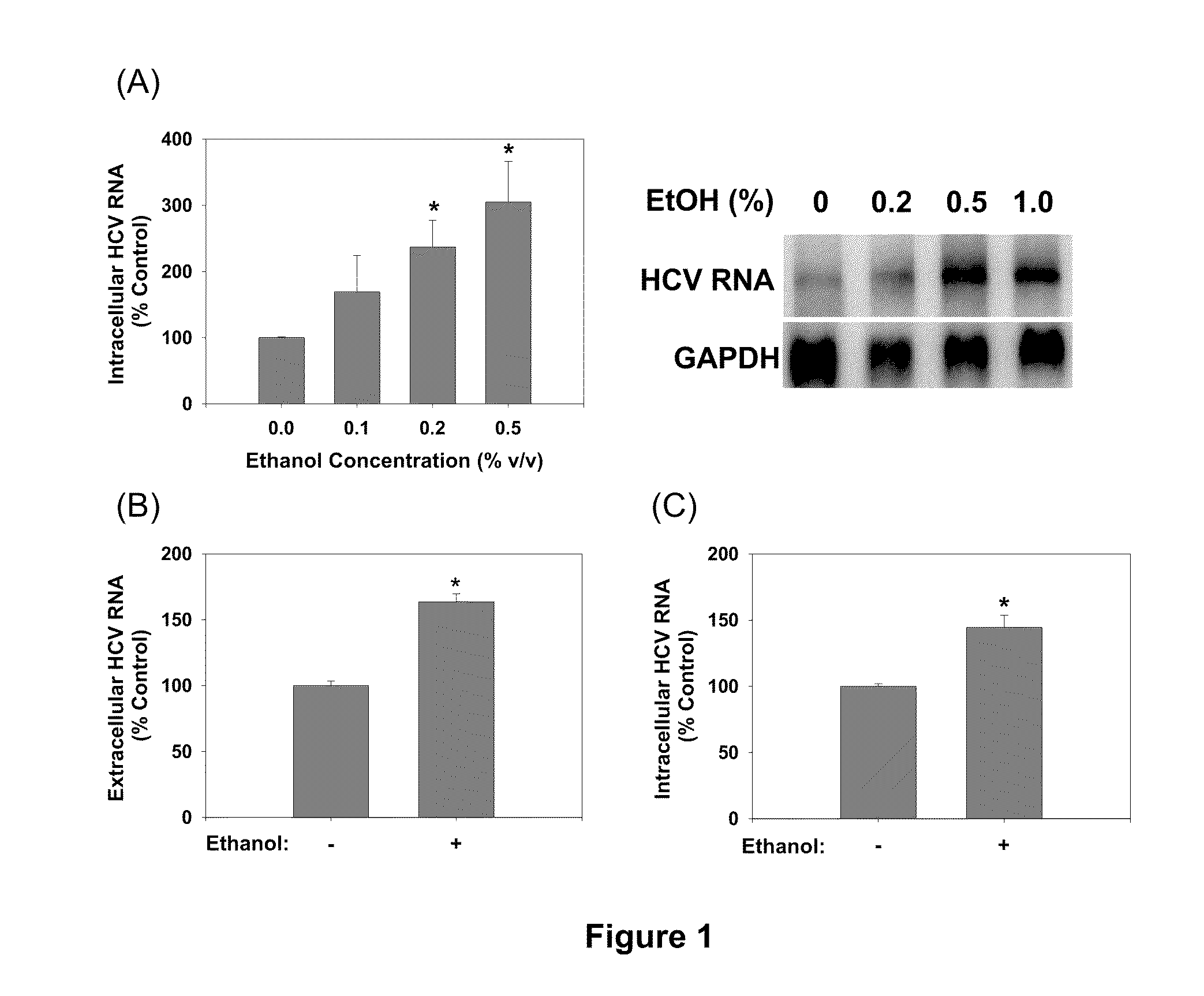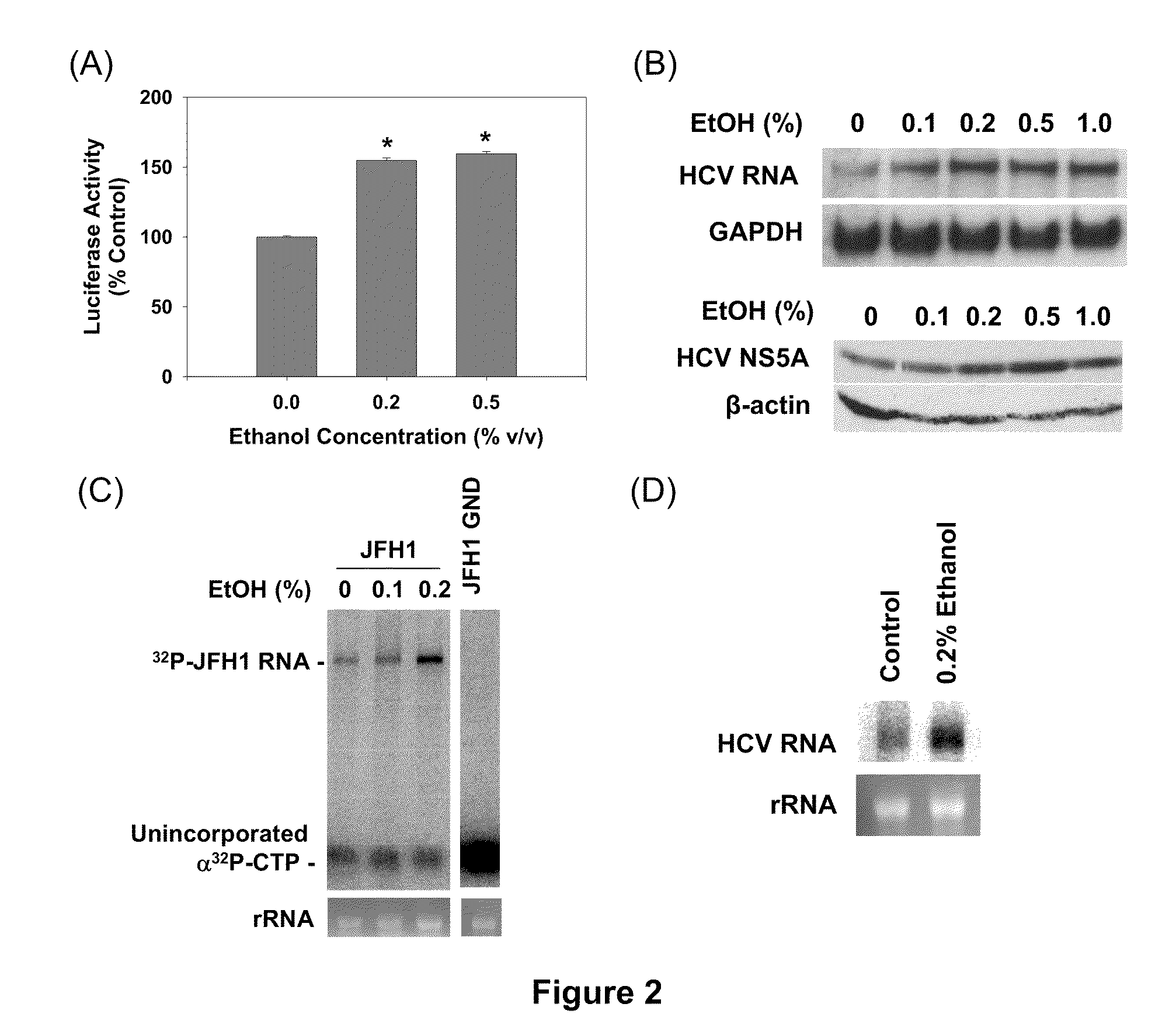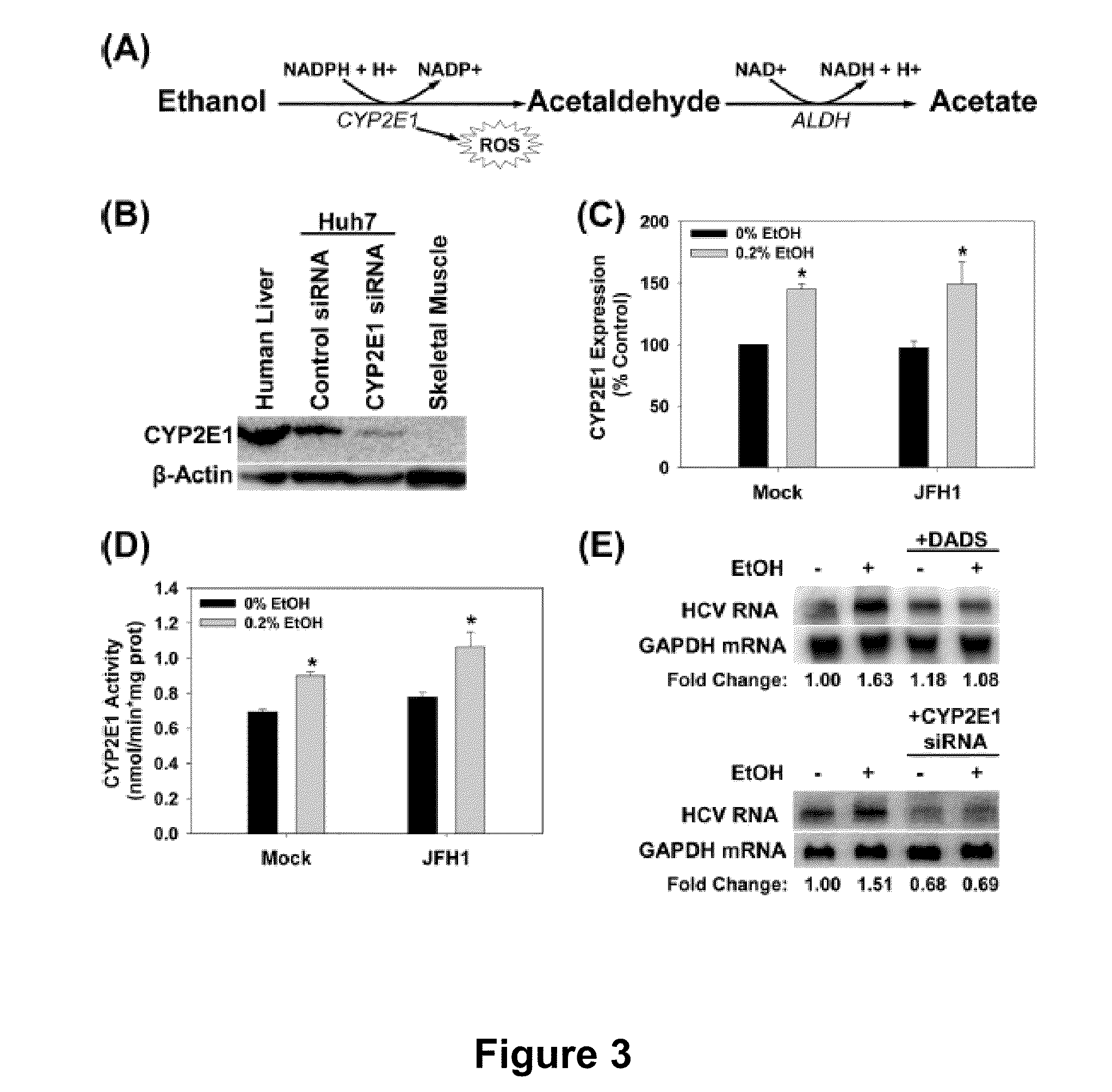Ethanol Enhances the Complete Replication of Hepatitis C Virus: the Role of Acetaldehyde
a technology of acetaldehyde and ethanol, which is applied in the direction of viruses/bacteriophages, biocide, peptide/protein ingredients, etc., can solve the problems of not being able to demonstrate whether ethanol directly enhances hcv production in the context of the complete viral replication cycl
- Summary
- Abstract
- Description
- Claims
- Application Information
AI Technical Summary
Benefits of technology
Problems solved by technology
Method used
Image
Examples
example 1
Experimental Procedures
[0121]HCV Constructs
[0122]The genotype 2a HCV constructs, pJFH1 (produces infectious virus particles), replicative-null pJFH1-GND, and subgenomic pSgJFH1-Luc (contains a luciferase reporter gene), are described elsewhere (23, 24). Subgenomic HCV replicons are bicistronic constructs that express only the nonstructural proteins of HCV under the control of encephalocarditis virus IRES; neomycin resistance or firefly luciferase gene is under the control of the HCV IRES (15, 22, 24). These replicons support HCV RNA replication but no virus is formed in cell culture. Huh7 cell clones (SgPC2 cells, Clone B) supporting continuous replication of subgenomic HCV replicon of genotype 1b (Con1 sequence) were also used (17, 22).
RNA Transfection, Infection, and Cell Culture
[0123]The in vitro transcription, and transfection of HCV RNA, and Huh7 human hepatoma cell culture were performed as previously described (17). For experiments involving stable clones, cells were cultured...
PUM
| Property | Measurement | Unit |
|---|---|---|
| Concentration | aaaaa | aaaaa |
Abstract
Description
Claims
Application Information
 Login to View More
Login to View More - R&D
- Intellectual Property
- Life Sciences
- Materials
- Tech Scout
- Unparalleled Data Quality
- Higher Quality Content
- 60% Fewer Hallucinations
Browse by: Latest US Patents, China's latest patents, Technical Efficacy Thesaurus, Application Domain, Technology Topic, Popular Technical Reports.
© 2025 PatSnap. All rights reserved.Legal|Privacy policy|Modern Slavery Act Transparency Statement|Sitemap|About US| Contact US: help@patsnap.com



